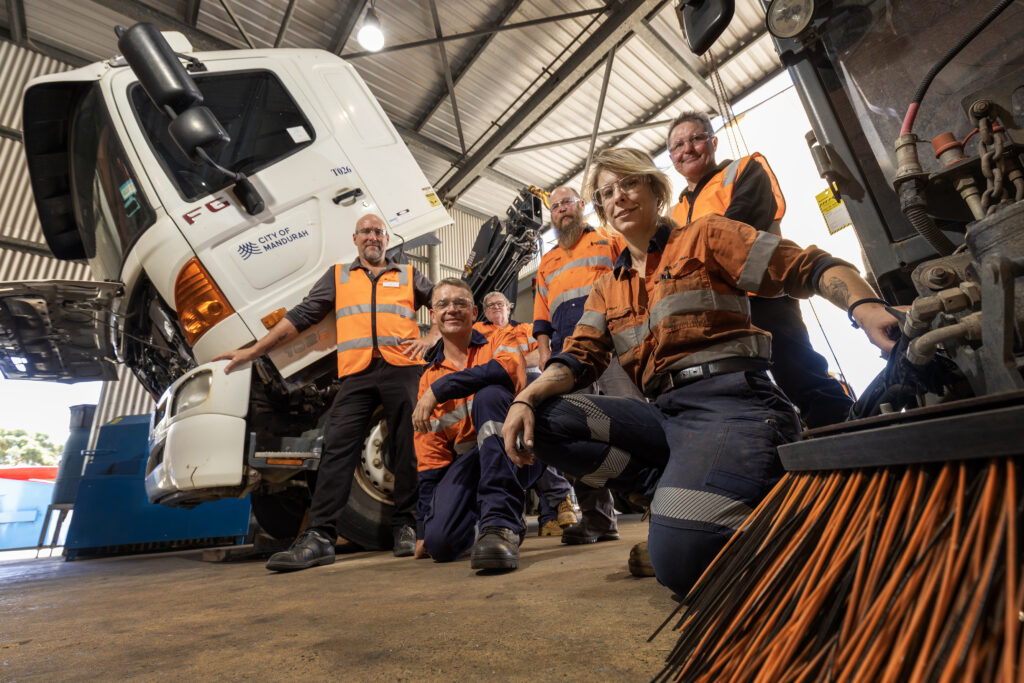Fit for work and worker’s compensation
South West WorkCare Forum | Wednesday 30 August, 2023

Recruitment can be difficult but when performed well, a successful hiring process can lead to increased employee satisfaction and retention, improved business performance and reputation, and reduced risk of injury to your employees.
From an injury prevention perspective, engaging in a recruitment process with a well-designed pre-employment medical protocol enhances the likelihood of hiring workers who can meet the specific job requirements at an acceptable level of risk – essential for both employer and worker.
Pre-employment medicals (PEM) are a useful tool for LGIS members to use in their recruitment process to make sure you get the right person for the job and avoid potential workers’ compensation claims.
When recruiting, LGIS members should follow a specific process to make sure, as reasonably practical, that the candidate is fit for the role and can meet the following role requirements:
The physical and psychological demands of the role are mentioned in detail in the LGIS job dictionary documents, available to our members via our website.
South West WorkCare Forum | Wednesday 30 August, 2023
Getting back to work – Injury
management, LGIS Office Ergonomic Champions and more.
Mental health issues are increasingly prevalent throughout organisations; 1 in 5 Australians are
diagnosed with a mental health condition every year (such as depression, anxiety and substance use).
Know the demands with job dictionaries
Job dictionaries clearly outline the cognitive, emotional, and physical demands of a role. Having the demands of a role documented and understood by the employer, GP and candidate allows for more meaningful use of the information collected in a PEM.
LGIS has developed 35 job dictionaries which cover common local government roles from rangers to grader operators, library workers and volunteer bushfire fighters. When logged in these can be downloaded from the LGIS website – Risk Management > health and wellbeing program > injury prevention.
Before you develop a PEM protocol for your recruitment and selection process, it is important for your local government to answer the following key questions:
Answering these questions clearly will allow your local government to design an appropriate PEM protocol for your workplace with specific requirements for particular roles. It’s important to remember that it is never a ‘one size fits all’ process.
The timing of a PEM is one of the most misunderstood aspects. It is important to treat the PEM as the final stage in the recruitment and selection process. This means the PEM must be completed before you offer the position to a candidate. Often PEM is merely considered as one of the ‘tick box’ requirements for the selection process. However, on the contrary, PEM is one of the most important aspects of recruitment and provides information that can minimise the risk to your local government and the potential worker, should they begin in the new role.
Pre-employment assessments or medicals come in varied shapes and sizes. A pre-employment assessment can be as simple as an extensive questionnaire and declaration, a general check-up with the worker’s private general practitioner (GP), or as complex as a 2-3 hour medical and physical capacity screen targeting a range of health conditions and physical demands of the role. Importantly, the pre-employment assessment should be tailored to your local government’s requirements and the job role.
Pre-employment assessments commonly cover the following:
a) Height, weight, body mass index (BMI), blood pressure, vision and GP check up
b) Audiometric testing and spirometry (risk dependent)
a) Range of movement
b) Upper body, lower body and core strength tests
c) Cardiovascular test
d) Manual handling component
In recent years it has been a common practice to include PPE testing within the pre-employment medical process. This ensures that when a worker starts employment they know how to fit PPE and what type of PPE (such as ear plug size/type or mask size/ type) to use. This is relevant for jobs where there are specific known hazards such as loud noise or dust.
Examples of PPE testing include Ear Fit Testing (testing ear plugs or ear muffs on a candidate) and Respiratory Fit Testing (testing candidates with masks). By incorporating these into the medical, it helps employers prevent injury and illness down the track.
These are an important component of the pre-employment process. This assessment can easily be tailored for a specific job role. A functional assessment can include the following components.
Aerobic fitness testing – this could be included for a job role that is physically demanding.
Manual handling – assessing how a candidate lifts (quality of technique) and how much they can lift. Different types of lifting and manual handling tasks can be assessed such as floor to waist lift, waist to shoulder lift, bilateral carry, unilateral carry, push / pull etc. Candidates are tested to see if they can achieve the inherent requirements (such as total weight safely lifted) of a job role.
Postural tolerance tasks – candidates are put in different postures for a period of time such as working overhead and stooped over to see how well their body tolerates the task.
Balance testing – as the name suggests, it tests the ability of a candidate to balance. This can be a static (with eyes open and closed) or dynamic test. This tests for proprioception and ankle instability, and may be important when working on uneven ground or at heights.
Gait analysis – looks at the biomechanics of a candidate as they are walking. This can be relevant to reveal any underlying issues or injuries.
Range of motion – this helps to assess the function and movement of the joints throughout the body.
Specialised joint testing – A range of clinical musculoskeletal tests can identify any underlying conditions or weaknesses which may increase the risk of injury.
When it comes to any PEM, your local government needs to understand and comply with industrial, anti-discrimination and privacy legislation, ensuring the medical testing conducted relates clearly to the inherent requirements of the intended role rather than simply taking a blanket approach to all jobs.
The main features of a non-discriminatory PEM are:
LGIS can provide expert advice about pre-employment assessments to ensure your local government identifies the most suitable candidates during your recruitment process. Our injury prevention team can also support members in using and developing job dictionaries, which provide valuable information on the physical capacity requirements of particular roles. This information can provide the base on which to build your recruitment process.
For further information, contact the LGIS WorkCare Services team at [email protected]

Whether it’s making sure that waste is collected, roads are maintained and that sports fields are bounce down ready, it only happens because of the sector’s specialist equipment and operators’ breadth of fleet and assets.

The City of Mandurah was one of the 17 LGIS members who participated in the motor fleet pilot program. Across the City there’s
a proactive risk approach and this was apparent when assessing
their fleet and plant management.

It was April 2022 when the LGIS injury prevention team visited Craigie Leisure Centre (CLC) to review the Kindy Gym program.
LGIS is the unifying name for the dedicated suite of risk financing and management services for WA local governments, established by the WA Local Government Association in conjunction with JLT Public Sector (part of the Marsh group of companies). LGIS is managed by JLT Public Sector (ABN 69 009 098 864 AFS Licence 226827).
Risk Matters, via this website, is designed to keep members, their staff and elected members informed on topical risk management and insurance issues and LGIS programs and services.